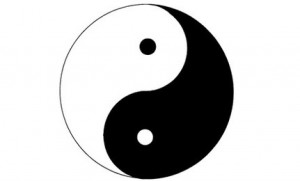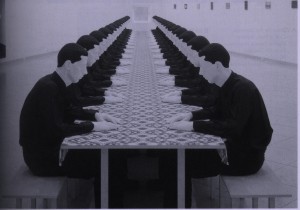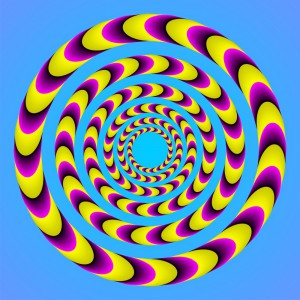Before understanding the principles of design, it is important to first know the elements of design. They can be encompassed by the following:
- LINE
Line can be considered in two ways. The linear marks made with a pen or brush or the edge created when two shapes meet. (I think we all have had enough of line from Project 1.)
- SHAPE
A shape is a self contained defined area of geometric or organic form. A positive shape in a painting automatically creates a negative shape.
- DIRECTION
All lines have direction – Horizontal, Vertical or Oblique. Horizontal suggests calmness, stability and tranquillity. Vertical gives a feeling of balance, formality and alertness. Oblique suggests movement and action. There is much more than One Direction.
- SIZE
Size matters, and is “simply” the relationship of the area occupied by one shape to that of another.
- TEXTURE
Texture is the surface quality of a shape – rough, smooth, soft hard glossy etc. Texture can be physical (tactile) or visual.
- COLOUR
Also called Hue.
- VALUE
Value is the lightness or darkness of a colour. It can also be used to create a three-dimensional effect. Value is also called Tone. Remember Chiaroscuro guys?
Now for the serious stuff.
Principles applied to the Elements of Design bring them together into one design.
How one applies these principles determines how successful a design may be!
The Principles of Design can be summarised as follows:
- BALANCE is a state of equalized tension and equilibrium, which may not always be calm.
For example, A large shape close to the center can be balanced by a small shape close to the edge. A large light toned shape will be balanced by a small dark toned shape (the darker the shape the heavier it appears to be).
- UNITY is the feeling of harmony between all parts of the work of art, which creates a sense of completeness. A good balance between unity and variety must be established to avoid a chaotic or a lifeless design.

- PROPORTION is the feeling of unity created when all parts (sizes, amounts, or number) relate well with each other.
Using the relative size of elements against each other can attract attention to a focal point. When elements are designed larger than life, scale is being used to show drama.

- DOMINANCE gives a painting interest, counteracting confusion and monotony. Dominance can be applied to one or more of the elements to give emphasis.

- CONTRAST is the juxtaposition of opposing elements eg. opposite colours on the colour wheel – red / green, blue / orange etc. Contrast in tone or value – light / dark. Contrast in direction – horizontal / vertical.
An image without contrast is uneventful so the key is to find the balance between similarity and contrast.

- MOVEMENT is the path the viewer’s eye takes through the artwork, often to focal areas. Such movement can be directed along lines edges, shape and colour within the artwork.

- REPETITION can sometimes be categorised under a method to establish unity, since the repetition of elements of design creates unity within the work of art.
Any repeating element should include a degree of variation to create interest.

Visual Design elements and principles describe fundamental ideas about the practice of good visual design.However, as stated by William Lidwell (a professor and consultant on matters of design), the best designers sometimes disregard the principles of design. Yet, there is usually some compensating merit attained at the cost of the violation. Unless you are certain of doing as well, it is best to abide by the principles.









